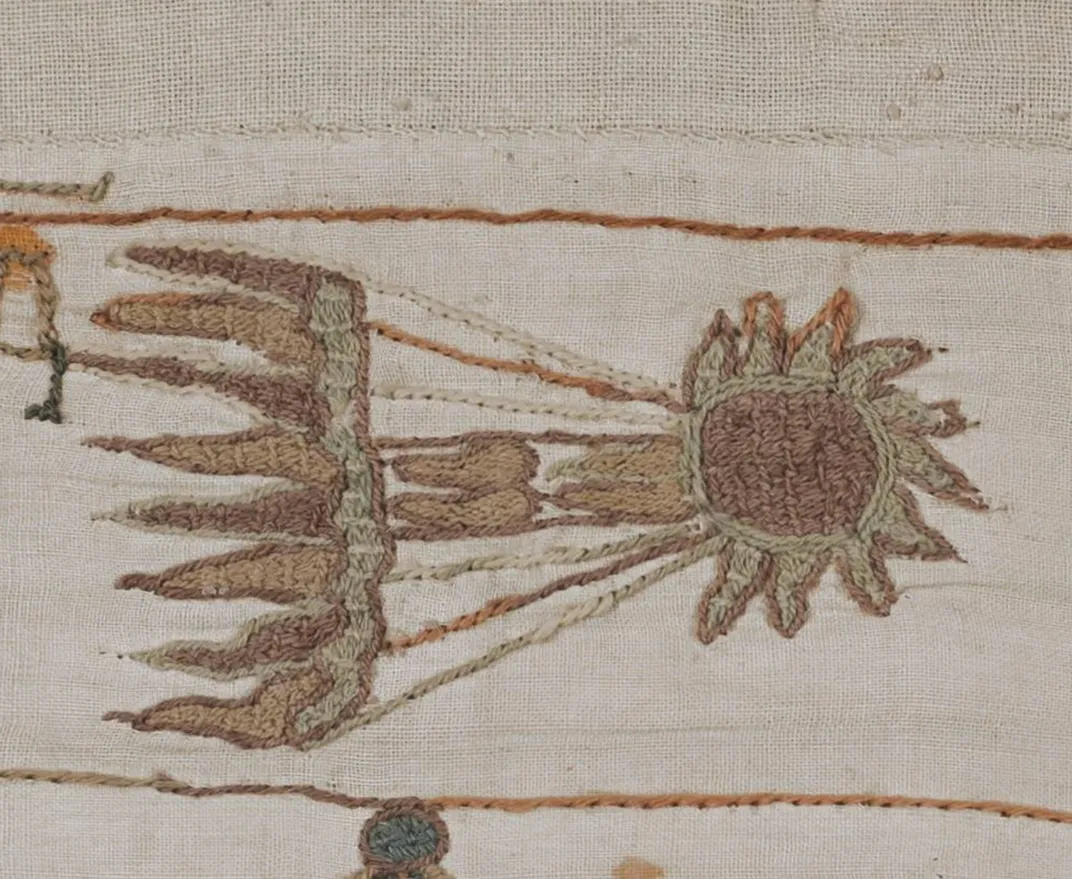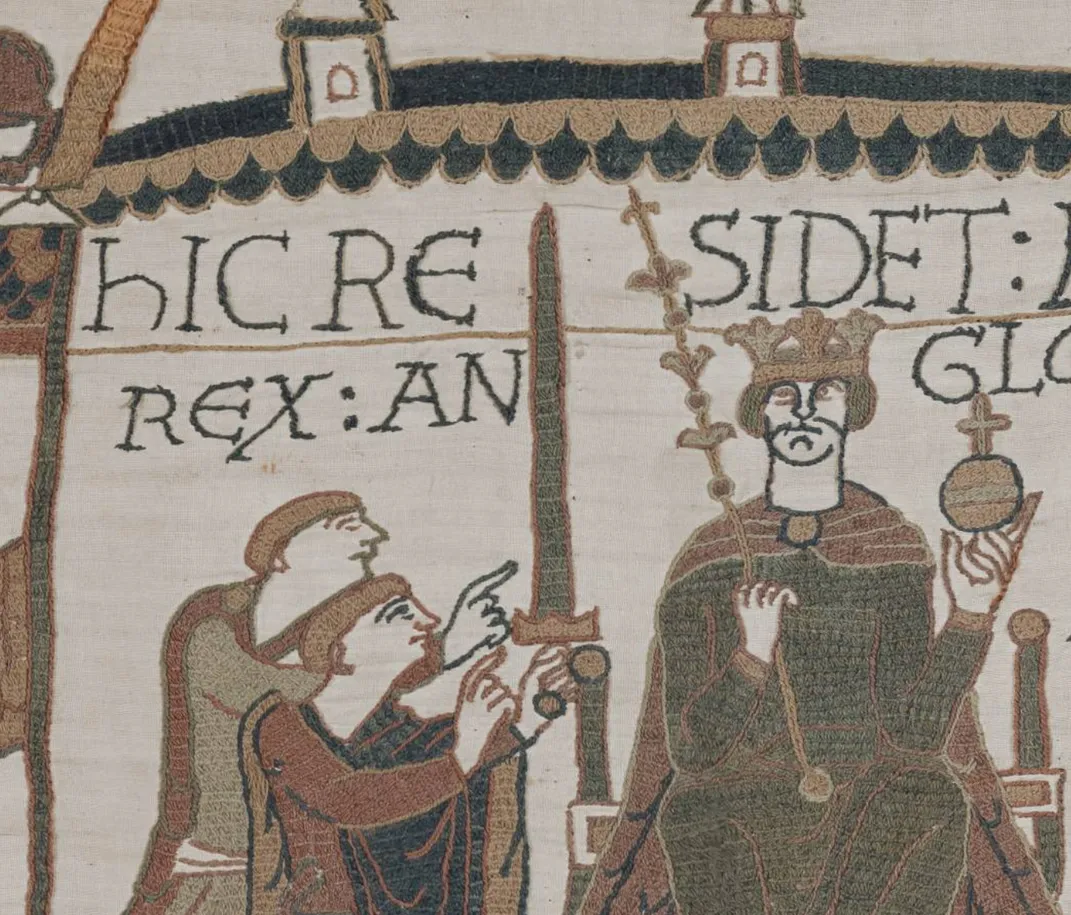Explore Every Stitch of the Famed Bayeux Tapestry Online
Viewers can peruse a high-resolution image of the 224-foot medieval masterpiece, which chronicles the 1066 conquest of England
:focal(1292x828:1293x829)/https://tf-cmsv2-smithsonianmag-media.s3.amazonaws.com/filer/94/ea/94eae605-fdf7-4a7d-aa7e-2af85da17cd9/bayeux_tapestry_scene1_edward.jpg)
Since the Bayeux Tapestry’s rediscovery in the 18th century, scholars have painstakingly cataloged the 224-foot-long embroidered cloth’s contents. Today, they know that the medieval masterpiece features 626 humans, 37 buildings (including the Mont-Saint-Michel monastery), 41 ships, and 202 horses and mules, among many other objects.
Thanks to a newly debuted, high-resolution version of the tapestry created by the Bayeux Museum in Normandy, France, anyone with an internet connection can now follow in these researchers’ footsteps, reports the Associated Press (AP).
Though the work is widely known as a tapestry, it technically counts as a work of embroidery. Popular myth holds that Queen Matilda of England and her ladies-in-waiting embroidered the sweeping tableaux, but historians don’t actually know who created it, per the Bayeux Museum’s website.
In 75 chronological episodes, each titled with a Latin phrase, the tapestry depicts the struggle for power between William, Duke of Normandy, and Harold Godwinson, England’s last Anglo-Saxon king. The scenes concludes with William’s successful invasion of England in 1066, which earned him the nickname “William the Conqueror.” According to the museum, the illustrations depict William in a favorable light and would have served as a record of events—as well as propaganda—for the successful ruler.
As art historian Kristine Tanton writes for Khan Academy, the tapestry’s scenes are arranged in three horizontal zones, with the main events in the middle. The upper and lower zones depict husbandry, hunting and scenes from Aesop’s Fables that relate to the central action.
Throughout, Tanton notes, the “embroiderers’ attention to specific details provides important sources for scenes of [11th]-century life as well as objects that no longer survive.”
Scenes of a banquet, for instance, give historians crucial information about Norman dining practices, while battle scenes illuminate the types of military equipment and armor that soldiers would have worn in the 11th century.
The artisans who created the tapestry used ten colors of dyed wool thread and four types of embroidery stitches. In the high-resolution online version, viewers can zoom in on areas that have faded or grown discolored over the years. Interestingly, notes Cailey Rizzo for Travel + Leisure, the tapestry’s 19th-century restorations have faded more than the original colors and are now “almost … white.” As the AP reports, the tapestry’s curators plan to undertake a major renovation in 2024 aimed at fixing the wear and tear in the work’s weave.
Odo de Conteville, bishop of Bayeux and William the Conqueror’s half-brother, likely commissioned the work around 1070, either to decorate his home or to hang in the nave of the newly constructed cathedral of Notre-Dame of Bayeux. The tapestry was rediscovered by scholars in 1729 and has hung in a dedicated museum in Normandy since 1983.
“Such narrative hangings, occasionally put on display for all the faithful to see, were not just intended to decorate churches,” the museum notes on its website.
Instead, the museum adds, tapestries such as these “told stories that the people of the time, the majority illiterate, could follow. As with the Bayeux Tapestry, they could become a piece of propaganda for a victorious conquest.”
/https://tf-cmsv2-smithsonianmag-media.s3.amazonaws.com/accounts/headshot/nora.png)



/https://tf-cmsv2-smithsonianmag-media.s3.amazonaws.com/accounts/headshot/nora.png)